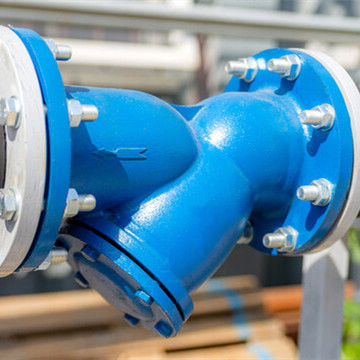If you are interested in learning about the different types of strainers used in pipelines, you’ve come to the right place. Before you start your next project, make sure you’re familiar with the different types of strainers. It’s important to choose the right one for your application based on the type of contaminants you’ll be dealing with.
The first thing you should know about strainers is their working pressure and temperature ranges. You should look for a strainer with an open area ratio of two to four times the cross-section of the inlet pipe.
You should also know the critical velocities of the straining medium, which is essentially the speed at which the fluid passes through it. The higher the screen velocity, the larger the differential pressure drop.
If you want to know more about different types of strainers in the pipeline, continue reading this article.
Table of Contents
ToggleWhat Exactly Is A Strainer Valve?
Strainer valves are important pieces of equipment that are installed at strategic locations throughout a system. They remove unwanted debris that can clog up the components of the system and damage equipment. A strainer valve is added to protect the vulnerable equipment.
The size of a strainer’s mesh is determined by the size of the particles that need to be filtered. The larger the mesh size, the larger the hole, and vice versa. Mesh-lined strainers are the most common type of strainer. They have holes that are approximately one-fourth the diameter of the particles that need to be removed. Mesh-lined strainers are more expensive but can achieve fine straining.
The purpose of a strainer valve is to remove solid matter from liquids before they enter downstream equipment. They also protect downstream equipment by separating debris from the liquid. Depending on how they’re installed, they can be installed alone or in a series.
There are also Y strainers, which are designed to be installed horizontally and vertically. Y strainers are smaller and more compact than conventional strainers, and they can be installed either horizontally or vertically.
10 Guide on Different Types of Strainers in Pipeline
There are four general types of strainers, namely Basket Strainers, Y-Type Strainers, Special Applications, and Temporary Strainers. Each strainer has a specific use and is made of different materials.
- Basket Strainer
The Basket Strainer has many benefits for pipeline users. It can protect downstream equipment by preventing solids and debris from entering the system. When selecting a basket strainer, it is important to consider the type of liquid and pressure you will encounter. A properly chosen basket strainer will protect downstream equipment while minimizing operating and maintenance costs. This filtration device removes large particulate matter from the water and other process liquids. These are the most commonly used in food and beverage processing.
- Y-Type Strainer
A Y-Type Strainer is used in various industrial processes. The structure of a Y strainer is characterized by two metal plates that are held together by bolts or gaskets. The interior portion of the Y strainer is made of the perforated sheet with a wire-mesh lining. There are different sizes and mesh types available. The Y-Type Strainer is used to filter liquids through pipelines. It can work in both vacuum and suction conditions. However, it has a lower dirt-holding capacity. It requires more frequent cleaning.
- Temporary Strainers
Temporary strainers are used to remove debris from pipelines during the startup of new pipelines or during the cleaning and modification of existing systems. These types of strainers are designed to function at high differential pressures, and their elongated signal arms make them easy to identify. Typically, they are installed upstream of pumps and other equipment to protect them from debris and foreign objects. They also come in a variety of sizes and configurations.
- Special Type Strainers
Special Type Strainers are specially designed to remove solid matter in a pipeline. They feature a perforated metal mesh that acts as the straining element. Solids can be blown through the screen or exhausted into the atmosphere. For special applications, you need a special type of strainer. Some special types are strainers, wide differential strainers, jacketed strainers, large capacity basket strainers, magnetic strainers, micronic strainers, offset strainers, and reducing strainers.










